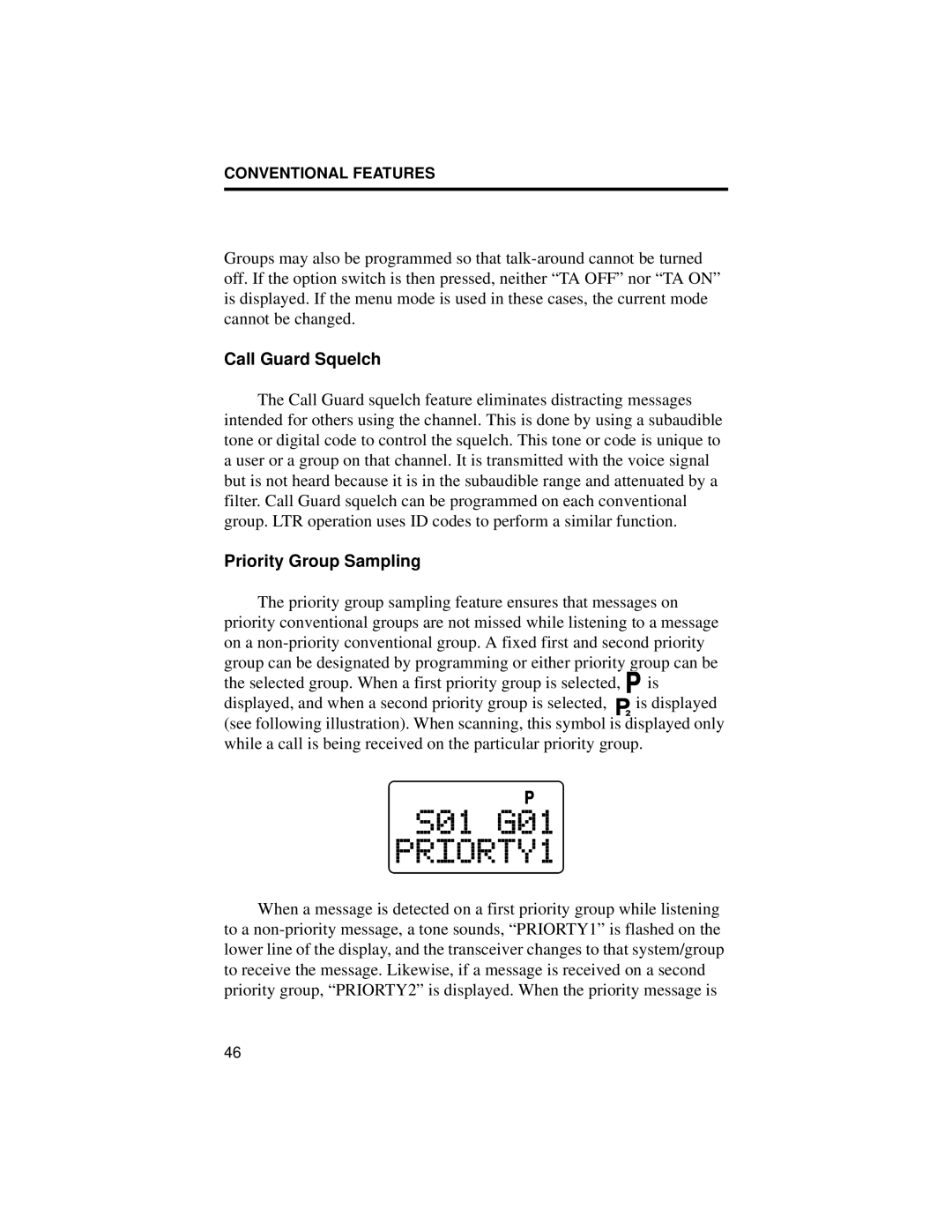
CONVENTIONAL FEATURES
Groups may also be programmed so that
Call Guard Squelch
The Call Guard squelch feature eliminates distracting messages intended for others using the channel. This is done by using a subaudible tone or digital code to control the squelch. This tone or code is unique to a user or a group on that channel. It is transmitted with the voice signal but is not heard because it is in the subaudible range and attenuated by a filter. Call Guard squelch can be programmed on each conventional group. LTR operation uses ID codes to perform a similar function.
Priority Group Sampling
The priority group sampling feature ensures that messages on priority conventional groups are not missed while listening to a message on a
the selected group. When a first priority group is selected, ![]() is
is
displayed, and when a second priority group is selected, ![]() is displayed (see following illustration). When scanning, this symbol is displayed only while a call is being received on the particular priority group.
is displayed (see following illustration). When scanning, this symbol is displayed only while a call is being received on the particular priority group.
When a message is detected on a first priority group while listening to a
46
